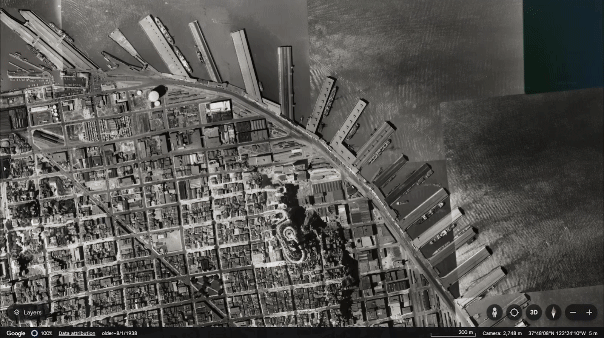Google Maps just got a huge Street View upgrade — and you can now travel back in time
New locations appearing as well

Google Earth is getting an interesting new feature where you'll soon be able to "travel back in time."
The new feature, announced in a Google blog post along with Street View updates, allows you to view historical satellite and aerial images on Google Earth. Google claims that some pictures go as far back as 80 years.
It's a way to see how areas have changed over time or how natural and man-made events quickly altered the geography of a place. An example Google showed was the Lake Oroville reservoir in northern California. After years of droughts, it was at the lowest it had ever been. However, an unprecedented series of rains that hit the state in 2023 filled the reservoir to maximum capacity.

In Street View, Google updates imagery in 80 countries with new images from places like Australia, Brazil, Mexico, New Zealand, Uruguay and more.
Google says this is possible thanks to a new, more portable Street View camera introduced in 2022. "As our planet changes, this updated imagery helps keep the map fresh for people everywhere," Google says in their post.
The update includes Street View in four countries that have never had it: Bosnia and Herzegovina, Namibia, Liechtenstein and Paraguay.
If you're like me and enjoy exploring places like Street View, these updates and countries will be a fun way to spend an afternoon.
Sign up to get the BEST of Tom's Guide direct to your inbox.
Get instant access to breaking news, the hottest reviews, great deals and helpful tips.

Finally, Google announced that they are working on sharpening satellite images in Maps, which will allow you to see "a brighter, more vibrant globe."
Part of this included utilizing AI-powered cloud removal technology trained to remove things like clouds, cloud shadows, haze and mist. Google claims that this model is trained to retain real-world weather patterns and keep them visible on the maps, like "ice, snow, and mountain shadows."
More from Tom's Guide

Scott Younker is the West Coast Reporter at Tom’s Guide. He covers all the lastest tech news. He’s been involved in tech since 2011 at various outlets and is on an ongoing hunt to build the easiest to use home media system. When not writing about the latest devices, you are more than welcome to discuss board games or disc golf with him.
-
Fox Tread3 September 30, 2024 - I purchased the program that became Google Earth from the company that originally published the App. years ago. It was great news when Google purchased the App/program/utility. and has done wonderful things to improve it over the years. Google Earth is one of the few Apps I own, and often use it find places I'm interested in because of News events, and to explore places that are used to film movie and TV productions. Also, as time permits, I use it to explore places that I will never be able to visit. Obviously, it's not the same as actually visiting those places, but it is a lot more environmentally friendly, and costs nothing. Google Earth has had a "back in time" function for quite a few years. It has been possible to see what some places and areas looked like in the past for some time now.Reply
